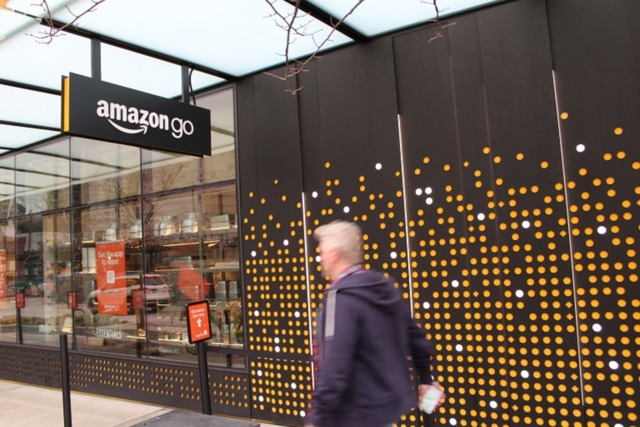Consumers love their smartphones. They also love quick purchases when the day is packed with errands.
So what happens when retailers bring these passions together? They pick a time-saving technology that enhances customer convenience while offering marketers a less intrusive remedy for understanding customer interest through data.
Consumer adoption of mobile devices, and additional self-service options such as ordering kiosks, has led to a blurring of in-store and online experiences. As a consequence, marketers have a chance to deploy predictive models that can complement device usage the right way. Small scale trials can help marketers refine the right personalization experiences, and even proactively address growing concerns for universal consumer access to goods and services as cashless technology is adopted.
Because customers demand for convenience and speediness, mobile retail behavior has stoked marketer passions for providing convenience to online and offline transaction activity. In a report from the National Retail Federation’s Consumer View tracking service, 70% of shoppers are aware of mobile payment capabilities and BOPIS (buy online, pick up in store). In-store still matters to customers; digital native retailers expanding their brands with stores is proof that it matters. But that expansion became more feasible after digital native brands first embraced cashless tech. Digital native brands proved that optimizing the checkout experience requires keeping activity with mobile in mind.
Amazon took that optimization further with its innovative Go stores. Customers arrive at a Go store, with their phones triggering a sensor turnstile as they walk in. The grocery items the customer selects are coded so that in-store cameras detect an item selection. The purchase is made when the customer returns to the turnstile to leave – the customer’s phone receives a digital receipt.
Cashierless tech brings a few key advantages to digital marketing strategies.
- First, cashierless retail creates data based on real-time customer behavior. In most mobile commerce operations, apps or chatbots gather information. The cameras and sensors that track inventory and the activity of customers create zero-party data on customer activity for retailers. Zero-party data is data that the consumer has agreed to allow the retailer to use. The data is intentionally and proactively shared without being generated from implied sources such as a cookie or from a calculated association such as a login to a webpage from a certain device. Zero-party data combined with predictive analytic models can strengthen brands through improving behind customer-facing services while avoiding key pitfalls of data collection. As the concept of cashierless retail scales, retailers can better refine its algorithms so they can suggest nearby stores to a customer’s current location and assist that customer in finding their preferred product choices
- Second, the frequency of customer activity can serve as training data for predictive machine learning models. A retailer can establish a quality recommendation engine that can let customers know where to find preferred choices. Moreover, retailers can develop forecast guidance based on purchase activity, yielding better ordering forecasts, fostering metrics for operational efficiency, and raising better communication among managers overseeing a cashierless retail operation
- A third benefit is enhancements to machine learning capabilities, together with the potential to reduce data silos. Data silos occur when data is cast into storage, such as a data lake, but no usage comes afterwards. The lack of usage creates overlooked opportunities when making data-based decisions. Cashierless retail provides a starting point for surfacing ideas to improve operations and aligning those operations against customer activity. Managers seeking to eliminate data silos but unsure where to start can consider small scale initiatives as an opportunity to dismantle data silos within an organization.
Marketers should expect more cashierless experiments like Amazon Go. Amazon Go stores have shown how a rethink of the checkout experience can shift competitive advantage, daring competitors to duplicate the success. Microsoft just announced a cashierless trial partnership with retailers – certainly the most daring bid against Amazon Go yet.
Marketers should also expect disputes about the societal impact of cashless tech. Researchers are concerned for a significant percentage of the global population who lack standard banking. This population segment has no credit or debit card that can be linked to a digital device for transactions. The consequence is potential “have-not” communities – people being unable to purchase vital products and services from stores that have adopted cashless tech. Marketers should monitor monetary debates and learn about ways to prevent neighborhoods from being economically redlined from stores that only allow cashless transactions. For example, New Jersey is considering legislation to require stores to accept cash.
Despite those concerns, marketers should still feel confident that a cashierless experience will benefit customers where it makes sense.
Retailers have long sought ways to provide agile retail experiences to complement customer behavior without being intrusive. Cashierless retail is a result of that approach, offering an opportunity to refine analytics and machines learning strategies, as well as the retail experience for the broadest segment of customers possible.








